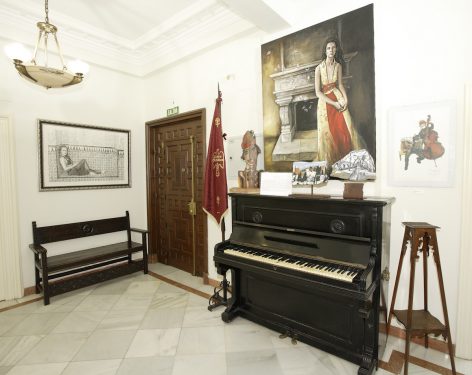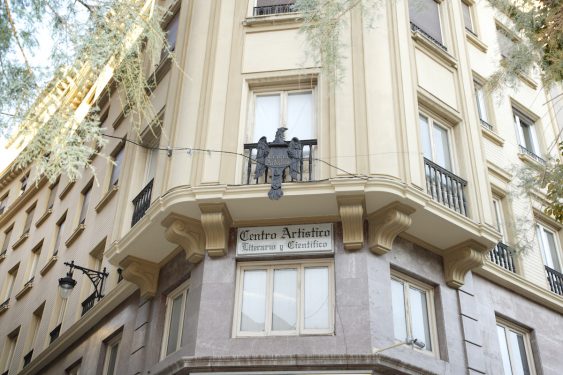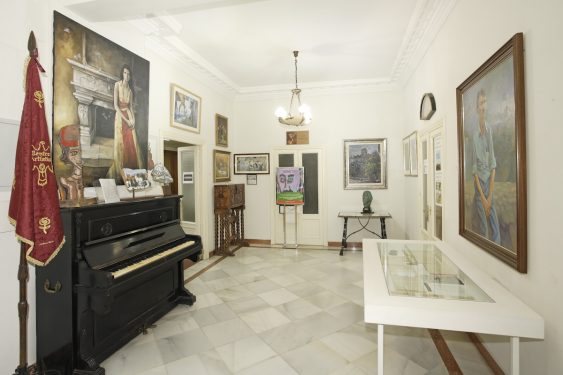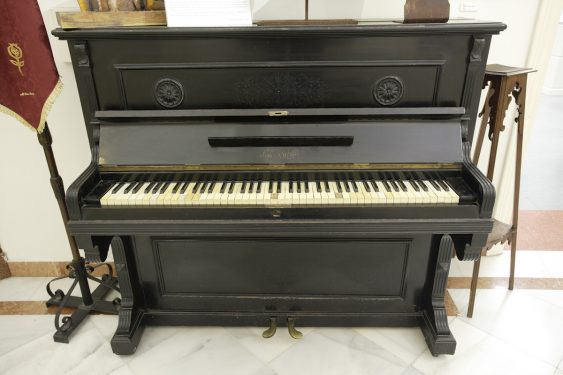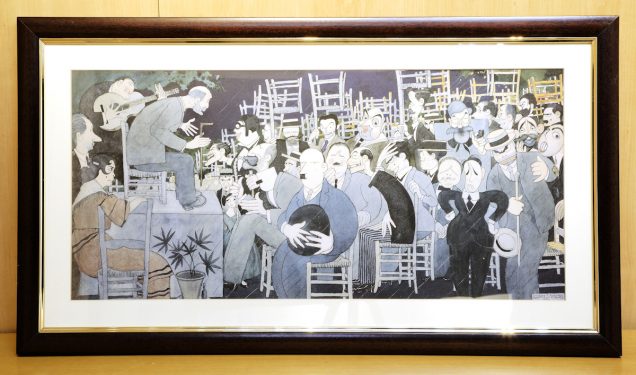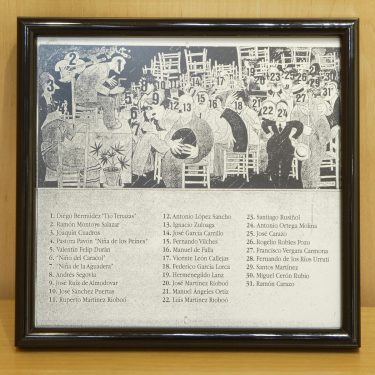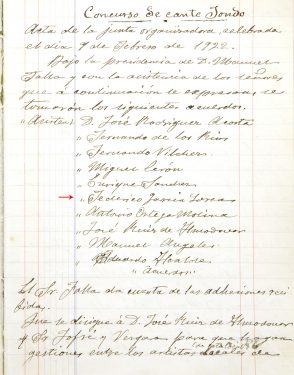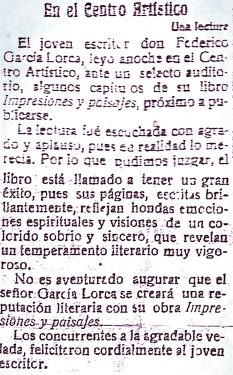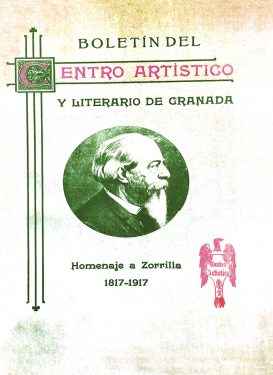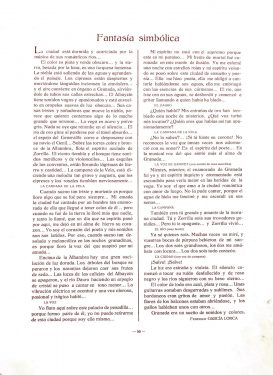Institution linked to García Lorca. It has had numerous venues. Lorca read there his Impressions and Landscapes, in 1918, played his piano and published his first creative text.
The Artistic, Literary and Scientific Center of Granada (Centro Artístico de Granada), a centennial cultural institution, was founded in April 1885 and plays a very important role in the cultural life of the city, especially in the first two decades of the last century. In its formation, the intellectual elite linked to Freemasonry was of great help. Its first board of directors was presided over by Vicente Arteaga and Manuel Gómez-Moreno was the vice-president. The founding headquarters was at Plaza Nueva, 20. In its long history, the institution experienced numerous vicissitudes and changes of address.
Although it has tended to represent the most conservative spirit in the face of the drive of the new generations of creators, it also welcomed the new values to address the even more traditionalist character of the Granada High School. Its first stage of glory was between 1889 and 1890, and ended around 1898 when the board proceeded to its temporary closure.
Lorca joined the institution as an aspiring musician. A year later, in 1918, Federico read in its premises some of the chapters of ‘Impressions and Landscapes’, his first book. However, his relationship with the Center was strained until the definitive rupture to found the Athenaeum in 1925.
Its second period of glory began in 1908 with the re-founding of the entity by a group of members led by Francisco de Paula Valladar who was seconded by others such as Ángel Barrios, Constantino Ruiz Carnero and Eugenio Gómez Mir. The discrepancies however were immediate. Ruiz Carnero and his group of republican liberals marked the distances that same year. The struggle between the most conservative sector and the young talents was characteristic throughout the first quarter of the century.
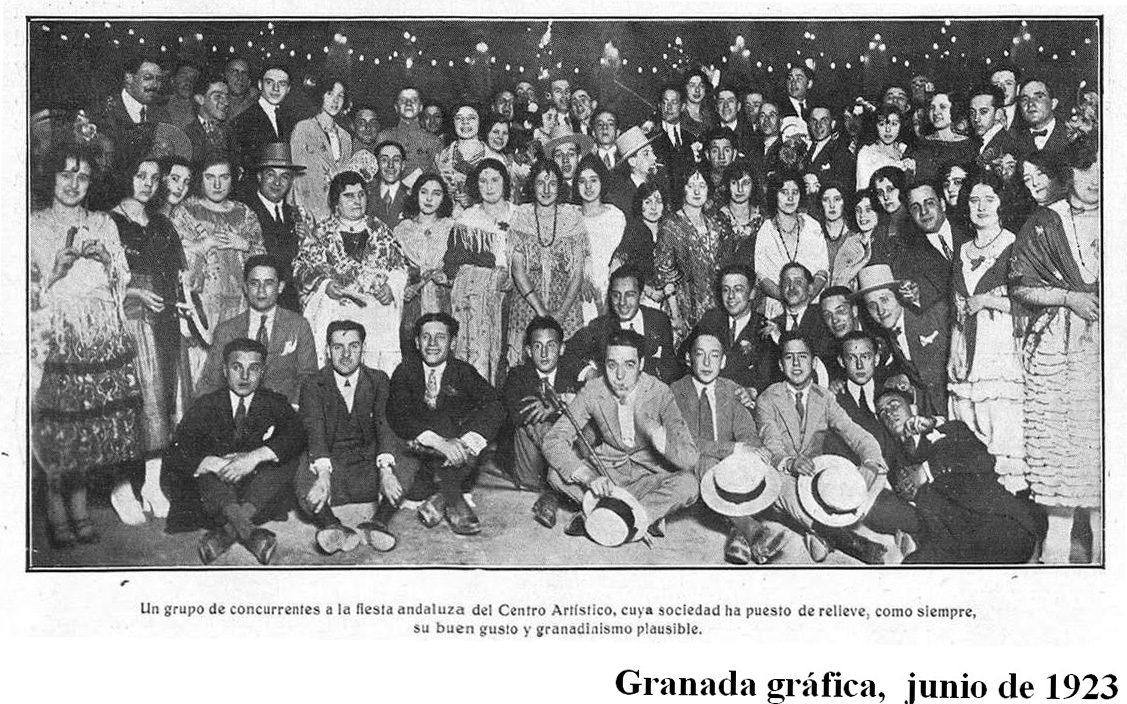
Federico and Francisco García Lorca appear linked to the Centro Artístico from 1915 when the headquarters, after several changes, was installed in Reyes Católicos street, where the monument to Isabel la Católica stands today. Despite the continuous divergences, the sculptor Juan Cristóbal made his debut at the Center (in 1913, at the age of 15); as did Manuel Ángeles Ortiz, who exhibited in 1913 and 1915, Ramón Carazo and Ismael González de la Serna.
According to the record book of the Centro Artístico, Federico García Lorca joined as a member on February 11, 1915 at the age of 17, and remained an active member until January 1, 1924. The relationship between Lorca and the Center was strained until the definitive rupture to found the Athenaeum in 1925.
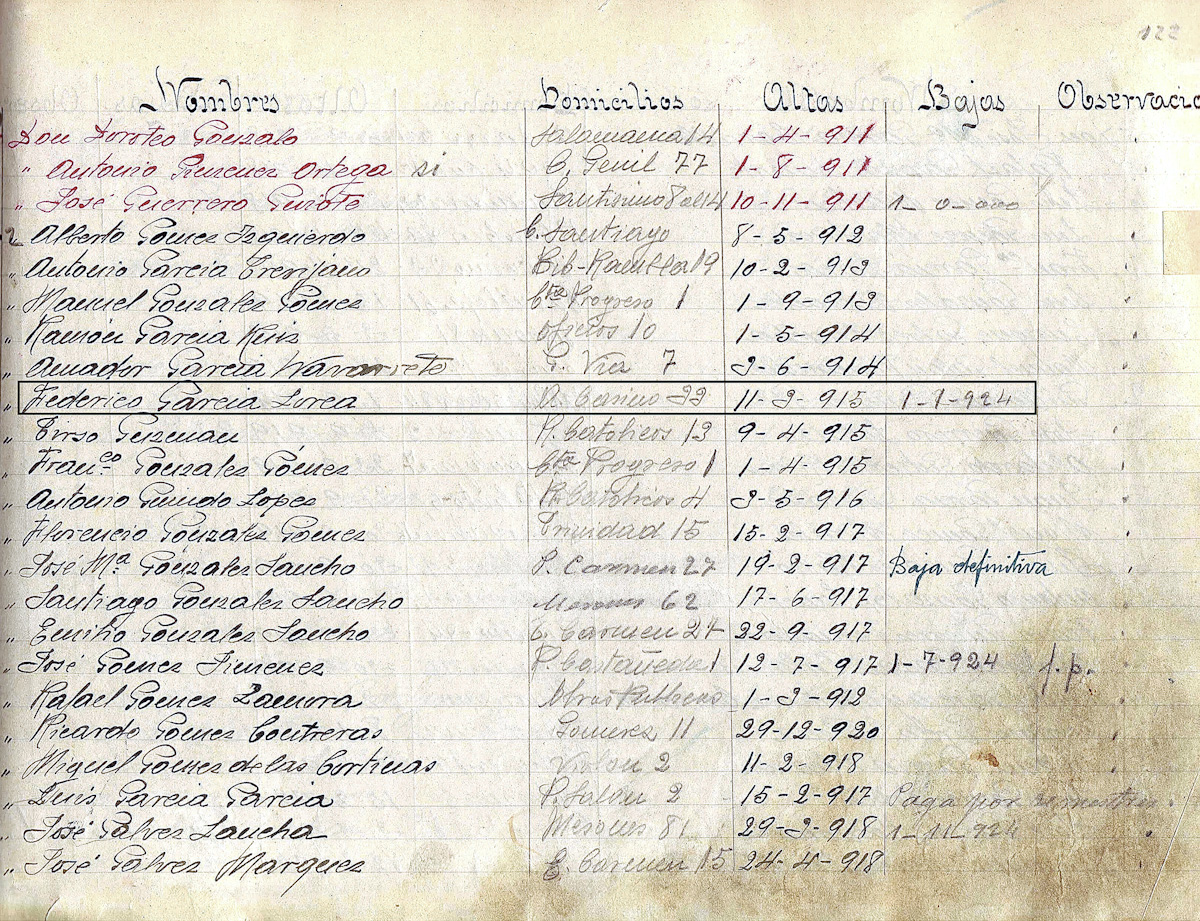
Lorca disembarked at the institution as an aspiring musician. Those were the times when he punctually attended the classes of Antonio Segura Mesa in the street Escudo del Carmen.
According to some accounts, Fernando de los Ríos, president of the Center, met Lorca while playing a Beethoven sonata on the institution’s piano. But he soon turned to literature. In fact, his first creative text, entitled Fantasía Simbólica, appeared in the bulletin that the center published in 1917 dedicated to José Zorrilla.
A year later, in 1918, Federico read in its premises some of the chapters of Impressions and Landscapes, his first book. “It was a local center of culture that sheltered all the creative movement of Granada. Nothing absolutely eminent, but certainly not negligible,” describes Francisco García Lorca.
The Centro Artístico was also the organizer of the Flamenco Song Contest of 1922, although not without controversy, and organized numerous concerts in the Carlos V palace, which eventually came together in the Festival of Music and Dance. The caricature drawn by Antonio López Sancho on the occasion of the song contest, which shows 31 characters linked to it, is kept at the Center.
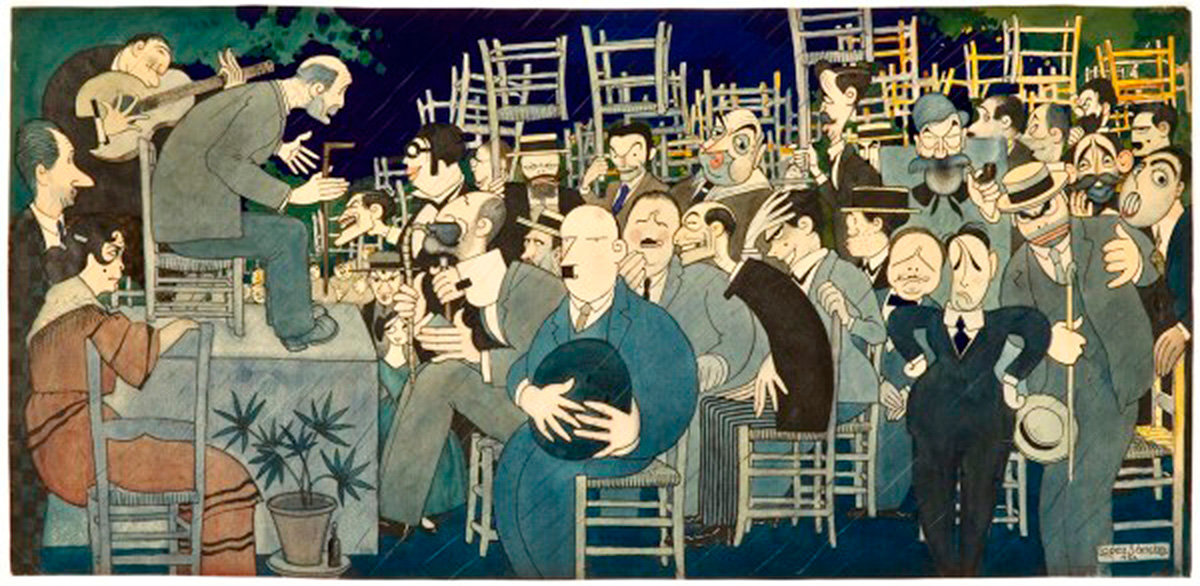
The definitive break with the young creators took place in 1925 when the Ateneo de Granada opened its doors sponsored by Manuel de Falla, García Lorca, De los Ríos, Ruiz Carnero and Hermenegildo Lanz, among others.
The Centro Artístico, until its current location at 2, Almona del Campillo Street, had several addresses. The first one was in Plaza Nueva, number 20. To begin its second stage in 1908, the institution rented a small house at number 7 Angel Street, now disappeared. However, a few months later, the Centro Artístico already had a large number of members, so the Board of Directors agreed to move to the centrally located in Campillo Alto Street, number 27, on the corner of Cuadro de San Antonio. However, two years later, it moved to number 48 Reyes Católicos Street. It then moved to a house on Carrera del Darro street and from there to the building of the Café Suizo (Swiss Café) in Puerta Real, on the corner of Mesones, where it remained for 17 years.
The Center, in Lorca’s time, focused on reviving some semi-domestic local industries, such as embroidery. One of the city’s best-known embroiderers in the second decade of the 20th century was Paquita Raya whom Lorca, wrapped in sweet irony, mentions in a beautiful story entitled The Rooster of Don Alhambro that appeared published in the magazine gallo. Lorca describes Don Alhambro as a native of Granada so sharp “that he constantly chewed myrtle leaves and saw at night the great historical glow that Granada sends to all the other cities. He also became an excellent water taster. The best and most documented water taster”.
Lorca assures that Paquita Raya competed in embroidery with the nuns of Santo Domingo, representatives of the Baroque school. “Paquita Raya, on the other hand, had a more popular art, more vibrant, a republican art, full of open watermelons and hardened apples on the fabric. An art of exact realities and Spanish emotion…. There was a great struggle between the two schools. All the dark-haired women were Paquita’s supporters. All the blondes, brunettes and a small group of albinos were in favor of the nuns”.
In 1918, García Lorca read at the Center some recently published chapters of Impressions and Landscapes. Hermenegildo Lanz attended that memorable session, which he describes as follows: “The day came when the Centro Artístico filled its hall with chairs. A student of Philosophy and Arts was going to read us pages of his first book, in which he made his observations of the excursion that the Faculty organized to Castilla. I had met him a few days before, and his imponderable vivacity, his enormous talent was imposing; we became instant friends, as young people we were in the secret misunderstood by the older generation with a poor memory of their youth. Our group was ready to clap until our hands were sore, we took our seats. Federico García Lorca obtained the first unanimous triumph of his ill-fated life with the reading of parts of his book Impressions and Landscapes“.
The city is asleep and caressed by the music of its romantic rivers …
The color is silver and dark green … and the mountain kissed by the moon, is an immense turquoise. The mist is coming out of the waters and enlarging the landscape. The cypresses are awake and moving languidly filling the air with incense … and the wind turns Granada into an organ, its narrow streets serving as pipes …
The Albayzín has vague and passionate sounds and is wrapped in soft tinsel of dark light … Their sad and dreamy houses moved by the fog, it seems that they want to tell us something about how great they looked …
The valley is steel and gray dust, nothing can be heard that echoes in the silence … the river of gold groans as it gets lost through the absurd tunnel … the mirror of the Generalife runs to marry her boyfriend Genil …
The spirit of Zorrilla floats around the copper and bronze towers of the Alhambra. The wind trembles and the forest has metallic and cello sounds, the squirrels of the convents are crying tears of iron and chastity … The bell of the Candle is chiming a melody so grave and imposing that the cypresses and rose bushes tremble nervously.
(Fantasía Simbólica)- Federico García Lorca. Complete Works V. RBA-Instituto Cervantes. 2007.
- Francisco García Lorca. Federico and his World. Alianza Tres. Madrid, 1990.
- Juan Mata. Apogee and Silence of Hermengildo Lanz. Diputación de Granada, 2003.
- José Mora Guarnido. Federico García Lorca and his World. Losada. Buenos Aires 1958.
- Lorca´s location
- Performing Arts Center
- current location
- Artistic, Literary and Scientific Center of Granada
- ADDRESS
- Almona del Campillo, 2
- Web
- http://www.facebook.com/CentroArtisticoGranada/
- Telephone
- 958 226 811
- centro.artistico.de.granada@gmail.com
- DETAILS OF THE VISIT
HOURS
– Monday to Friday, from 10.00 am to 2.00 pm and from 5.30 pm to 10.30 pm
– Saturday, from 10.00 a.m. to 2.00 p.m. and from 5.30 p.m. to 10.00 p.m.
– Sunday, closed
